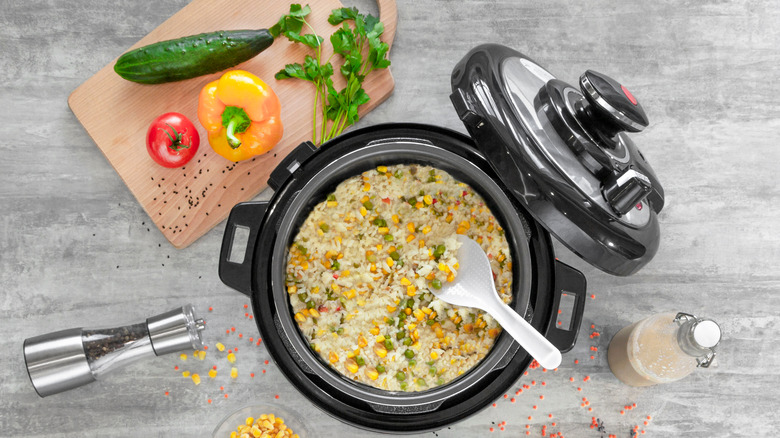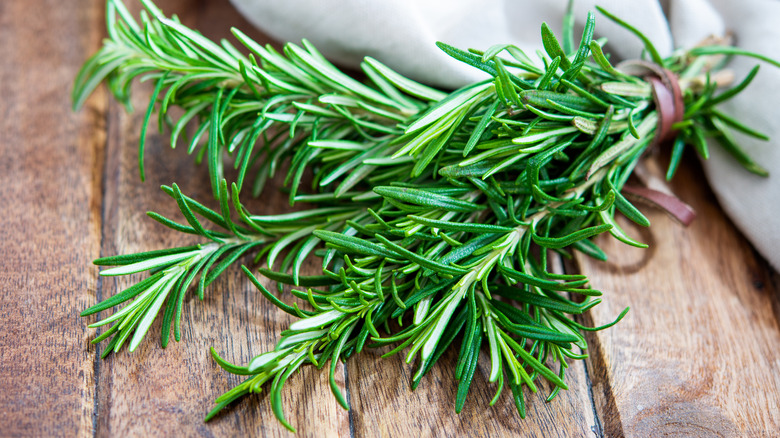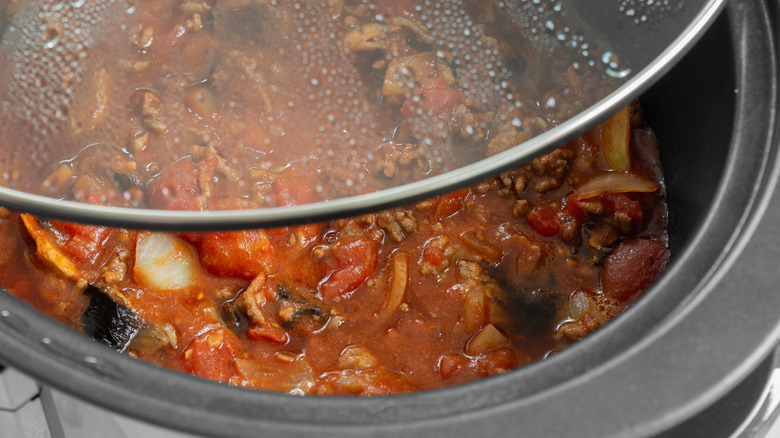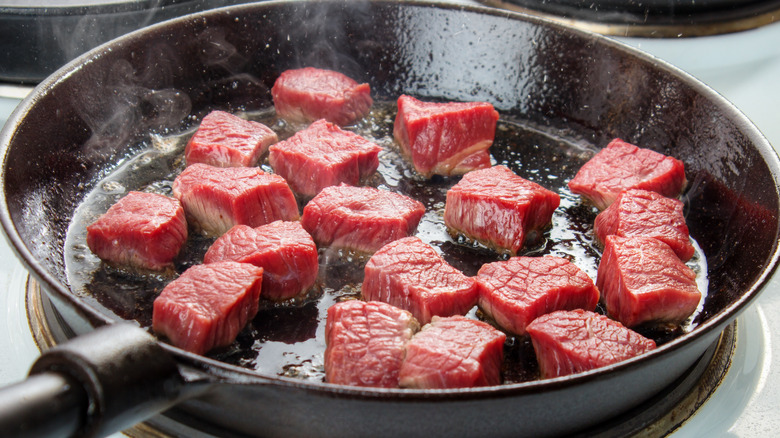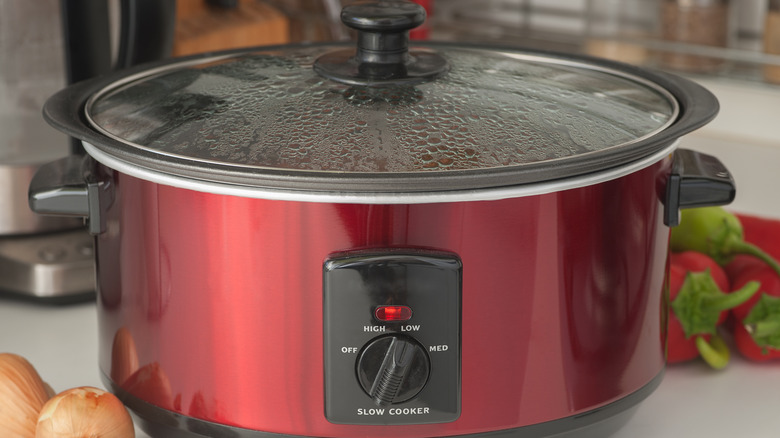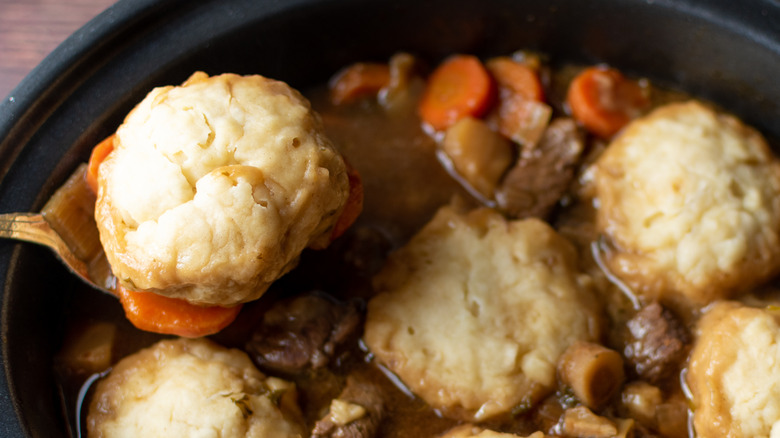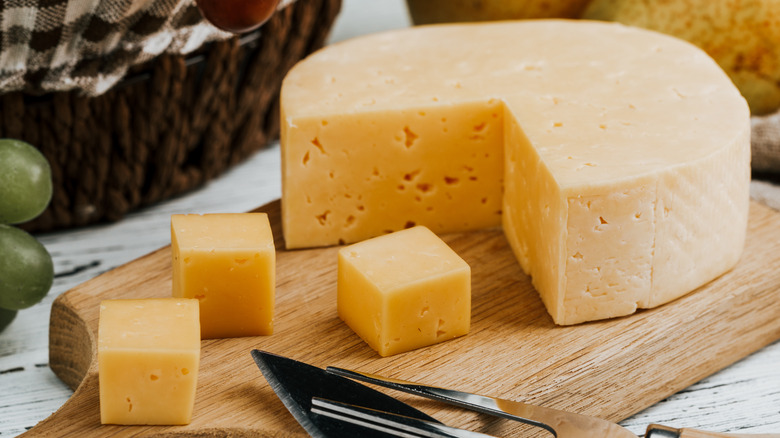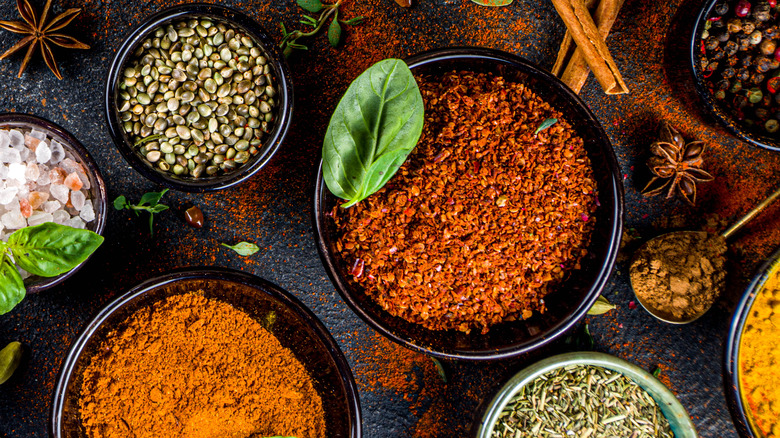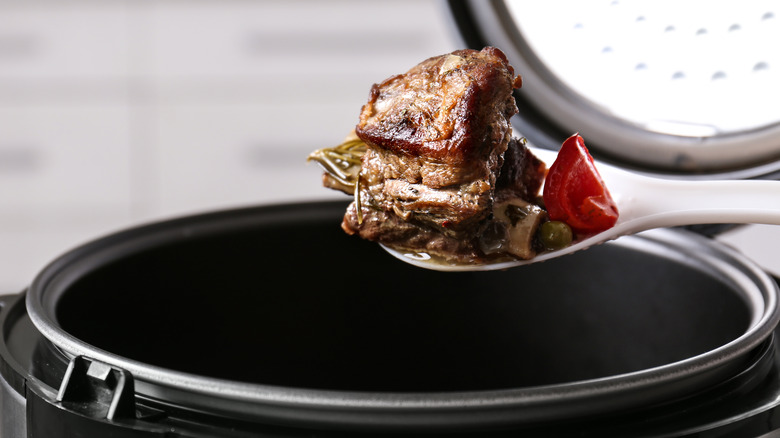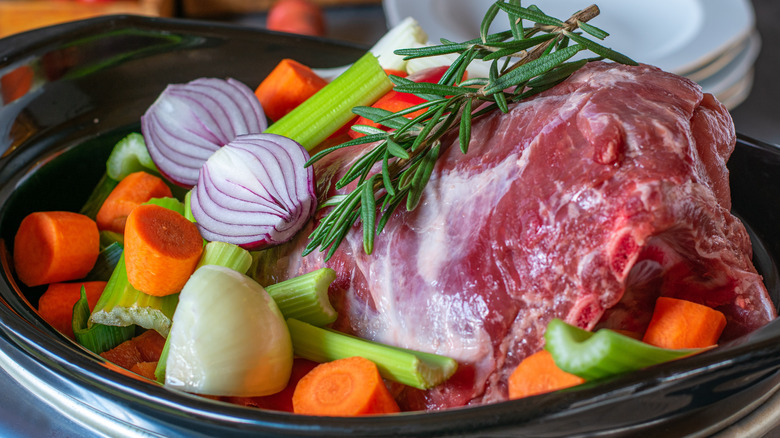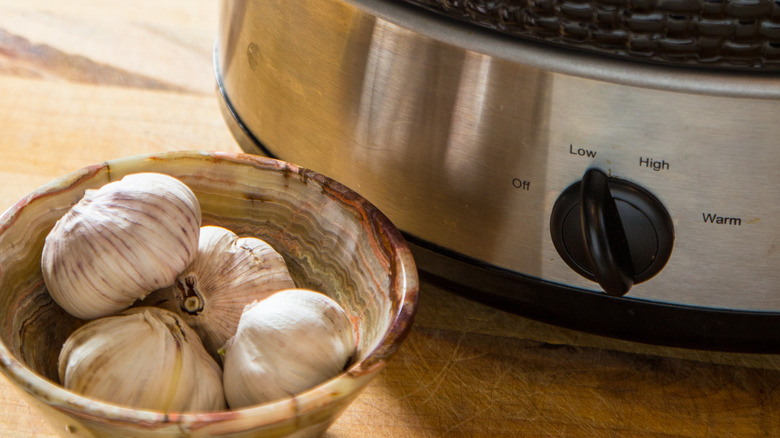Biggest Mistakes Everyone Makes With Their Slow Cooker
A slow cooker can make cooking real easy. After the initial prepping of chopping, cutting, and peeling, you simply add your ingredients to the slow cooker and let it do its thing for a few hours. All you have to do is sit back, relax, and enjoy the aroma of food cooking without doing anything. And there are so many incredible things to make in your slow cooker — including anything from a breakfast casserole to a pork loin roast – which makes it all the more fun to use.
However, while using a slow cooker to prepare dinner is pretty easy, there are certainly some missteps you should avoid. To ensure that you'll get the best results when using your handy kitchen appliance, we've rounded up some of the biggest mistakes everyone makes with their slow cooker, so that you won't do the same. After all, it would be criminal to botch a slow cooker mac and cheese recipe you can easily master.
Adding fresh herbs too soon
When many of us think about using a slow cooker to make dinner, we think of simply dumping all the ingredients in at once, turning the switch on, and letting the appliance work its magic. However, it's not that simple. For starters, some ingredients should be added later on as the rest of the recipe cooks. Case in point: fresh herbs.
According to Kitchen Snitches, it's best to wait to add your fresh herbs near the end — when you're almost ready to serve — to help prevent them from wilting. However, that doesn't mean you can't toss in dried herbs such as rosemary right away. Just be careful with the spicy ones that add extra heat (cayenne pepper, we're looking at you). Those dried spices, just like fresh herbs, should probably be added in later, unless you're after some serious heat in that chili.
Taking the lid off while it's cooking
Okay, we've all experienced making dinner on a very hungry stomach and feeling like we can't wait to dig in. We know how tempting it is to nibble on even just a bit of spaghetti while you're still boiling it — and how it's even more tempting to lift the cover of your slow cooker midway through its cooking time to see how things are going. The smell that's wafting in the kitchen is temptation alone, but it's important to refrain from removing the lid while your food is cooking.
Brit + Co says it's important to keep the lid on your slow cooker so your food won't dry out. It's also a safety hazard: Lifting your lid too soon can burn you if that sauce splatters. If a recipe calls for you to lift the lid midway through or near the end (for adding fresh herbs, for example), be sure to do so carefully.
Not searing your meats beforehand
When we want an easy recipe to make for dinner, we usually turn to the slow cooker, since there's hardly anything to do but a few easy preparations. We already know we need to chop vegetables before we add them to the slow cooker when making our favorite minestrone soup recipe, but what about meat preparations? Sure, you can place your meat directly in the slow cooker without doing anything to it, but you may want to consider searing beforehand.
Searing your meat before adding it to your slow cooker can not only help it cook faster, but can also give it a delicious caramelized flavor you won't get when you simply dump it in there raw. Plus, the rich flavor from the meat will also help enhance the rest of the dish, and can even add better color to the overall result. That seems like a win-win situation to us to add that extra step.
Cooking your food too long
Another great attribute about the slow cooker is that it takes its time to cook. You can turn it on and leave the house without worrying about your food burning the house down. Some recipes call for a couple hours on high heat, while others allow the food to simmer on low for a longer period of time. Either way, this slow cooking method will have your food coming out tender and flavorful. But can you overcook your food when using your slow cooker? The answer is yes.
LiveStrong says cooking your food too long in a slow cooker can cause the ingredients to shrink and lose any tenderness they once had. However, other ingredients might turn mushy, which is also something no home cook is looking to achieve. To ensure this doesn't happen, be sure to follow the recipe instructions regarding the cooking time so you can get the best possible outcome.
Overfilling your slow cooker
We know how tempting it is to simply stuff your slow cooker with ingredients so that you'll get a large and hearty meal in the end. And while you can get a good amount in there, depending on the size you have at home, there is a limit as to how much you can actually put in appliance. When you overfill your slow cooker, you could cause some big issues to your dinner. In fact, it's one of the biggest mistakes everyone makes with their slow cooker.
Boss the Kitchen says when you overfill your slow cooker, you risk your food not cooking all the way through. You might also find your food will take even longer to cook if the slow cooker is full beyond its capacity. Meanwhile, if you're filling your slow cooker with too much water, you risk losing flavor and creating a big ol' mess if the pot begins to spill over on the counter. Just remember that there should always be a gap near the top of the slow cooker to allow for enough space from the food and the lid to prevent spillage.
Adding dairy too soon
As we learned earlier, not all ingredients are treated equally when it comes to adding them to your slow cooker. While some can be dumped in there from the beginning, others cannot. Similar to fresh herbs, it's important to know when to add your dairy product to your slow cooker. Hint; it's not at the beginning of the cooking process.
Generally, it's not a good idea to cook dairy products such as cheese and heavy cream for too long in a slow cooker. Doing so can cause these ingredients to turn lumpy and oily, which is not something you're looking for when you're making that creamy mac and cheese. Instead, it's recommended to add dairy much later (or near the end of the cooking period) and allow it to melt into the recipe for just a few minutes before serving. This way, you can get that creamy goodness you intended, without any unwanted lumps.
Under seasoning your food
Slow cooker meals are great because of how easy they are to make, but that doesn't mean they are foolproof. In fact, it can be hard to figure out exactly how much to season your dish, since you aren't making it on a stove where you can taste test along the way.
Kitchen Appliance HQ says it's hard to determine the amount of salt to add to a large pot such as a slow cooker. If you don't add enough salt, you risk having your food taste bland — but over-salting can make things taste, well, way too salty. When you're cooking on the stovetop, you are usually seasoning your ingredients as you sauté or fry. With a slow cooker, you're leaving those ingredients to fend for themselves. Many slow cookers users also add water to their recipes instead of broth, which can make the food taste rather bland.
Adding foods that shouldn't be in a slow cooker
We know that certain foods should not be added to the slow cooker right away when you start cooking, but there are actually some foods that shouldn't be thrown in there at all. This may come as a shock to some — especially to folks who feel that they can throw just about anything in there — but it is something important to remember when you're whipping up those recipes.
BestLife says cooking shellfish in a slow cooker is a major no-no. Not only will this possibly stink up your appliance (and your kitchen), but it also will cook your shrimp way too fast and cause it to shrink. Frozen meat is also something that doesn't belong in your slow cooker, as it will take too way too long to defrost and can cause a leak of harmful bacteria in the process. Another thing to reconsider adding to your slow cooker recipe is wine. Using it on a stovetop is fine as it can evaporate and improve flavor. But this doesn't happen in a slow cooker, so your meal may not taste right if you try using it.
Adding ingredients in the wrong order
We know how inviting it is to dump all your ingredients into a slow cooker and let them cook. But did you know there is a correct order in which your ingredients should be added? Layering your ingredients the right way in your slow cooker will help with the cooking process and have your recipe coming out just right (and not leaving any hungry friends disappointed).
Generally speaking, you will want to add the ingredients that need the most heat first. Keep in mind that the bottom of your slow cooker is the hottest area of the appliance, so your heartiest ingredients should go there to ensure they are cooked all the way through (and that they will come out tender). All the other ingredients that you need to finely chop (like garlic, for example) should be added last, so that they're at the top (where there is less heat).
Not preheating your slow cooker
Adding your ingredients to your slow cooker and turning it on may sound like an appealing prospect, but this can actually be one of the biggest mistakes everyone makes. You may want to think about preheating your slow cooker, similar to when you use your oven or grill. Placing any hot ingredients (such as seared meat or sautéed veggies) into a cold slow cooker can actually curb the development of the flavors during the cooking process.
Besides locking in that flavor you really want, pre-heating your slow cooker can also protect your health. Cook your food on the highest setting for the first hour or so in order to prevent any potential food safety issues (via the University of Minnesota Extension). If you think about it, it doesn't take that much effort to preheat your slow cooker. It's a simple step that can make your slow-cooked meals safer and better-tasting.
